Articles & Playbooks
Stop trying to work harder. Start building an AI-powered company.
We’ve tried over 500 AI tools. Most of them are shiny distractions. A few of them, though, quietly print money by helping you work less, think clearer, and move faster than your competitors.
This post is about those few.
Not “cute AI hacks.”
Not “How to write a basic prompt.”
These are the tools we actually deploy, the ones that compress weeks into hours and turn your operations into something dangerously close to unfair.
Let’s walk through them together.
Why You Won’t Get Rich by Working More
Here’s the hard truth:
In the AI era, you don’t get rich by working more.
You get rich by using tools that let you work less on the right things.
Working harder is already priced in.
Your edge now is:
- Automation instead of manual processes
- Second brains instead of scattered notes
- AI operators instead of bloated headcount
- Speed to build, speed to respond, speed to decide
So we’re going to show you 12 tools that:
- Shrink meetings
- Automate onboarding
- Build apps for you
- Call your leads
- Clone your voice
- Create video content
- Think with you
- Run your numbers
- Act as your chief of staff
- Turn text into decks
- Capture your company brain
- And talk to your customers over the phone
You definitely don’t need all 12 this week.
But you do need to pick one and ship it.
The 12 Tools (Quick Overview)
Here’s the stack we’ll walk through:
- Granola – AI note-taker that doesn’t invade your Zoom
- n8n / Make / Zapier / Agent Builder – Automation that scales without headcount
- Lovable.dev – “Type your idea → get a real app”
- YourAtlas – AI that calls your leads and books meetings
- ElevenLabs – Voice cloning that upgrades your content and CX
- HeyGen – AI video avatars so “not being on camera” isn’t an excuse
- ChatGPT Voice Mode – Hands-free thinking partner and strategy coach
- Precision – Data + alerts so everyone knows “the one move” to make each day
- Fyxer/Fixer – AI operations assistant (aka modern chief of staff)
- Gamma – Turn messy docs into visual decks and pages
- BuddyPro – Your company brain in AI form
- Vapi – Voice AI for support, sales, and anything that used to need a human on the phone
Let’s unpack each one with simple examples you can steal.
1. Turn Every Meeting Into a Searchable Brain (Granola)
Most AI note-takers are creepy.
They show up to your call like:
“Hi, I’m NotesBot-243, can I join?”
And everyone silently clicks “Remove.”
Granola works differently:
- It doesn’t join your meetings as a participant
- It uses local audio from your device
- You can type notes in real time, and it later merges:
- Your notes
- The transcript
- AI summaries
The magic is what happens after the meeting.
We can literally ask:
“Show us all the meetings where we discussed pricing,”
…and Granola pulls them up like Google for your conversations.
How to use it in your business:
- Sales team:
Search for “objections”, “budget,” or a specific competitor. - Product team:
Search “feature request” across months of calls. - Leadership:
Search “churn,” “roadmap,” or “hiring” to find old decisions.
Key takeaway:
Your meetings should become an asset library, not a memory test.
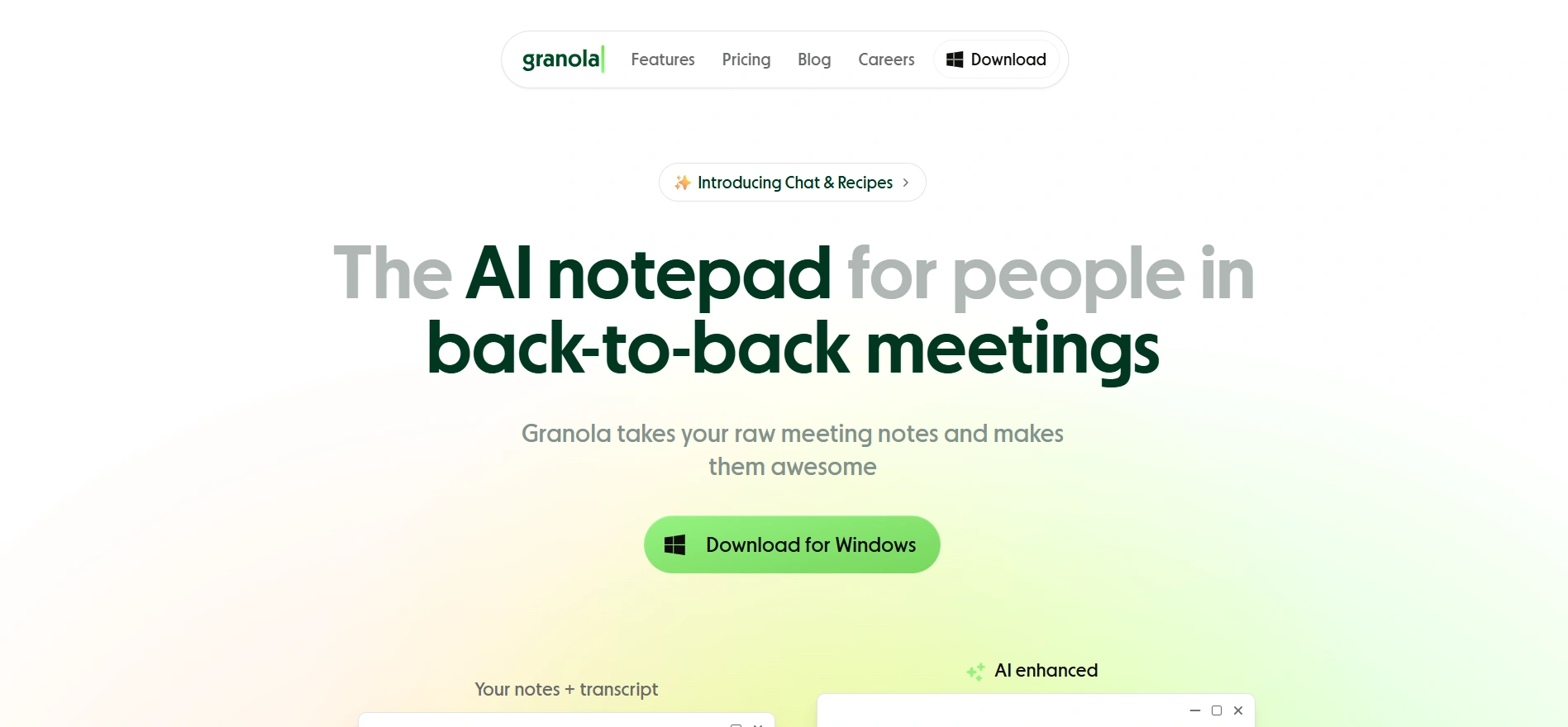
2. Automate Your Entire Onboarding (n8n, Make, Zapier, Agent Builder)
Automation is where AI quietly changes everything.
Tools like n8n, Make, Zapier, and now OpenAI Agent Builder let you:
- Connect all your systems
- Move data between them
- Let AI decide what to do next
Instead of:
“Team, follow this 17-step onboarding checklist manually, and please don’t forget step 11 again.”
We run a fully automated onboarding flow
Here’s the playbook.
The 7-Step AI-Powered Onboarding Flow
Step 1 – Payment triggers CRM
- Customer pays →
- Their info is automatically added to the CRM (HubSpot, Salesforce, etc.)
Step 2 – Personalized welcome email
AI uses data from the call or payment form to write:
- A personal welcome
- Clear next steps
- Links tailored to their situation
Not “Dear [FIRSTNAME], welcome to [COMPANYNAME].”
More like:
“Hey Sandra, excited to help you grow your coaching business. Since you came from our TikTok funnel, we’ll prioritize your content systems in the first 30 days…”
Step 3 – Intake form (form or voice)
You can:
- Send a form with all the questions you’d ask on a call
- Or use voice tools (more on that later) to have an AI “team member” call them, collect answers, and log everything.
Step 4 – Automatically invite them to support
- Slack community
- Circle
- Discord
- Private FB group
Whatever you use, they’re added automatically, no intern required.
Step 5 – Smart follow-ups
If they:
- Paid but didn’t fill out the form → send a nudge.
- Filled the form but didn’t join the community → send an invite.
- Joined the community but didn’t schedule onboarding → send a direct CTA.
AI watches behavior and sends only what’s missing.
Step 6 – Book a kickoff call
Once the basics are done, automation:
- Finds a slot on your team’s calendar
- Sends a link
- Confirms the booking
Step 7 – Auto-build a personalized presentation
This is the fun part.
Before the live kickoff call, AI:
- Reads their intake form
- Builds a custom slide deck showing:
- Their goals
- Their current situation
- The roadmap of how your product/service fits them
Your team just opens the deck and presents.
Key takeaway:
Onboarding should feel handcrafted to the client while being 90% automated behind the scenes.
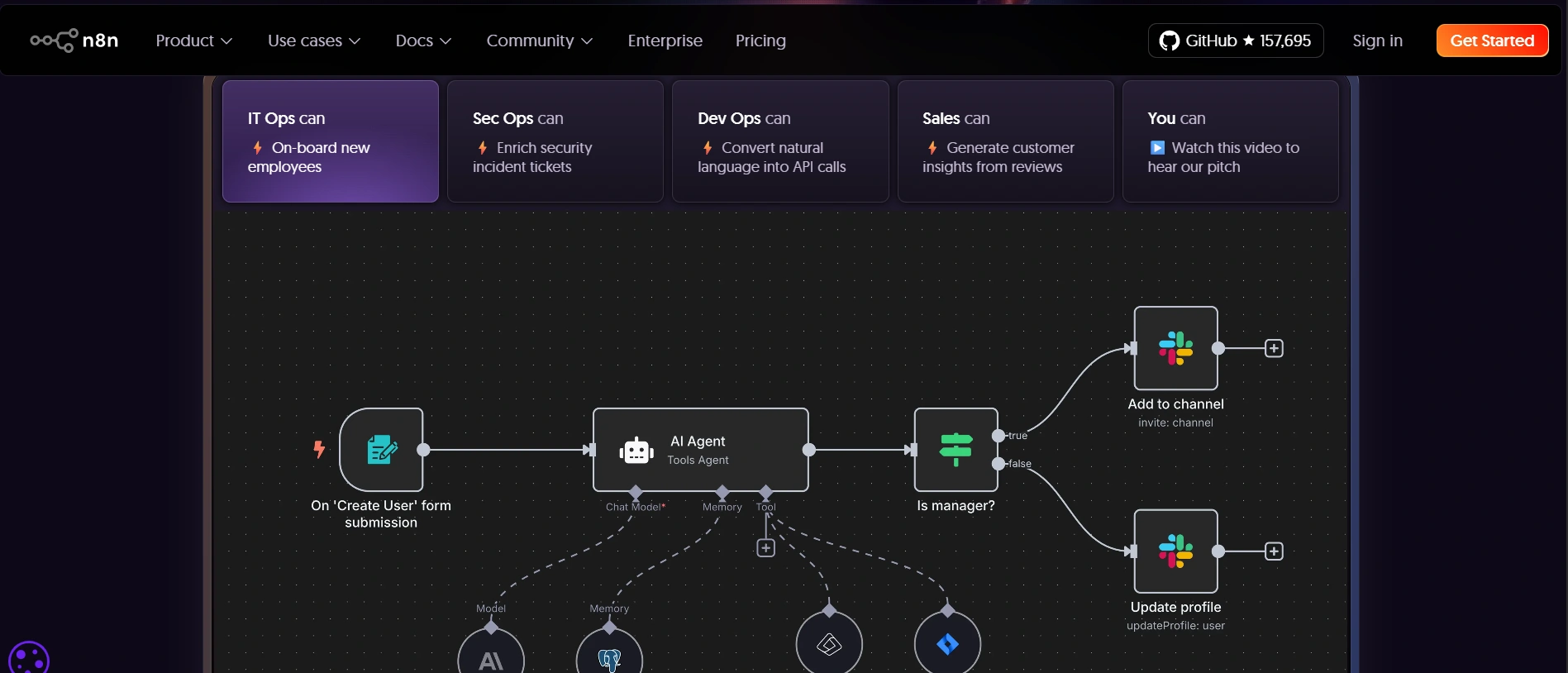
Which tool should you use?
- n8n – Pro-level, insane flexibility, steeper learning curve
- Make – Great middle ground, visual, easier to grok
- Zapier – Battle-tested, simple, huge integrations
- OpenAI Agent Builder – Early but promising: think AI that chooses what tools to use for you
Start with what feels easiest. You can always “grow up” into n8n later.
3. Build Apps Faster Than Anyone (Lovable.dev)
We all know “the idea guy” who says:
“We’ve got this brilliant app concept, just need a developer…”
That excuse is dead.
Lovable.dev lets you type your idea in plain language (any language, really), and it builds the app.
Example:
“Build a landing page for our social media marketing agency that targets plumbers in the Midwest.”
Lovable will:
- Design the page
- Write the copy
- Structure it for conversions
Then you say:
“Add Stripe so I can collect a 30% deposit.”
Then:
“Add a form to collect company info, number of trucks, and average monthly lead volume.”
You keep iterating:
- Type request
- It updates the code
- You preview
- You deploy
Key takeaway:
You no longer need to know how to code. You just need to know what you want.
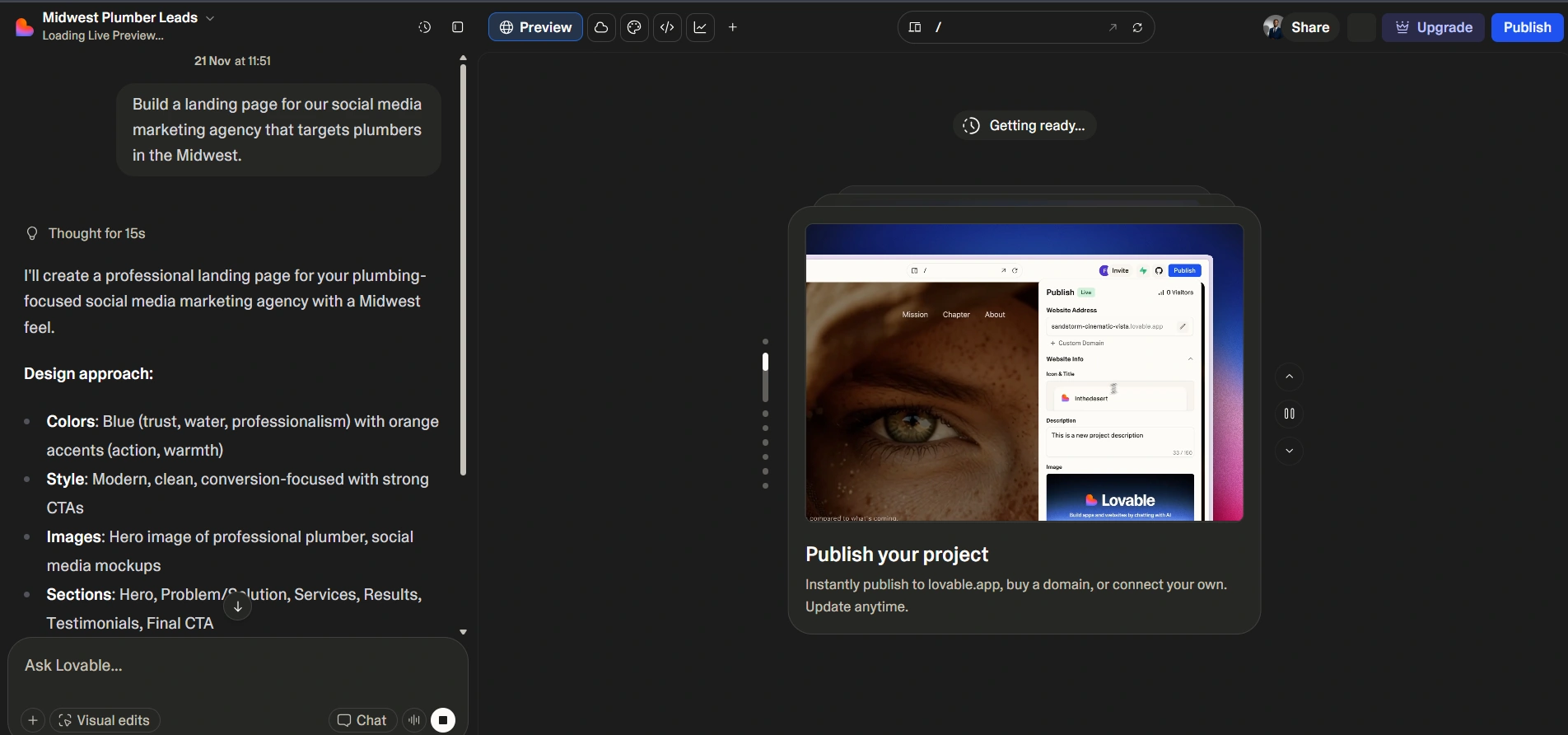
Speed is now a competitive advantage. Don’t be the founder still waiting on a 4-week dev sprint for a basic landing page.
4. Let AI Call Your Leads and Book For You (YourAtlas)
Here’s what YourAtlas actually does:
- Calls your leads immediately after they fill out a form
- Qualifies them
- Handles objections
- Books meetings directly on your calendar
- Works 24/7
- Never has “off days”
This is called speed to lead.
The faster you contact someone:
- The less they shop around
- The more they trust you
- The more likely you close them
Try this yourself:
- Go to youratlas.com
- Fill out a demo form
- Wait for “Emma” (or whatever they’re calling her today) to call
- Throw objections at it, ask weird questions, try to hang up mid-process
You’ll hear it:
- Check the calendar
- Confirm dates
- Call back if you drop
Key takeaway:
If your business depends on lead forms, letting humans handle the first touch is leaving money on the table.

5. Clone Your Voice and Scale Your Content (ElevenLabs)
ElevenLabs clones your voice so well it can:
- Fix mispronounced lines
- Add new lines you forgot
- Create entire voiceovers in your voice
Real estate example: The “too busy to record again”
One of our client sells homes.
We told him:
- Create a voice clone
- Use ElevenLabs
- Record a clean sample following their script
- Fix and upgrade old videos
- Find a walkthrough video where:
- The energy sucked
- He misspoke
- He forgot to mention something important
- Have the editor:
- Drop in new lines using the AI voice
- Smooth it into the original video
- Repost on TikTok, Instagram, Facebook
- See which version performs better
- Find a walkthrough video where:
- Scale content without scaling recording time
- Let a copywriter write scripts for:
- TikTok hooks
- Instagram Reels
- YouTube Shorts
- Use the voice clone for all of them
- Editors produce dozens of videos without dragging him into a booth
- Let a copywriter write scripts for:
Key takeaway:
Your voice shouldn’t be the bottleneck for your content or customer experience.
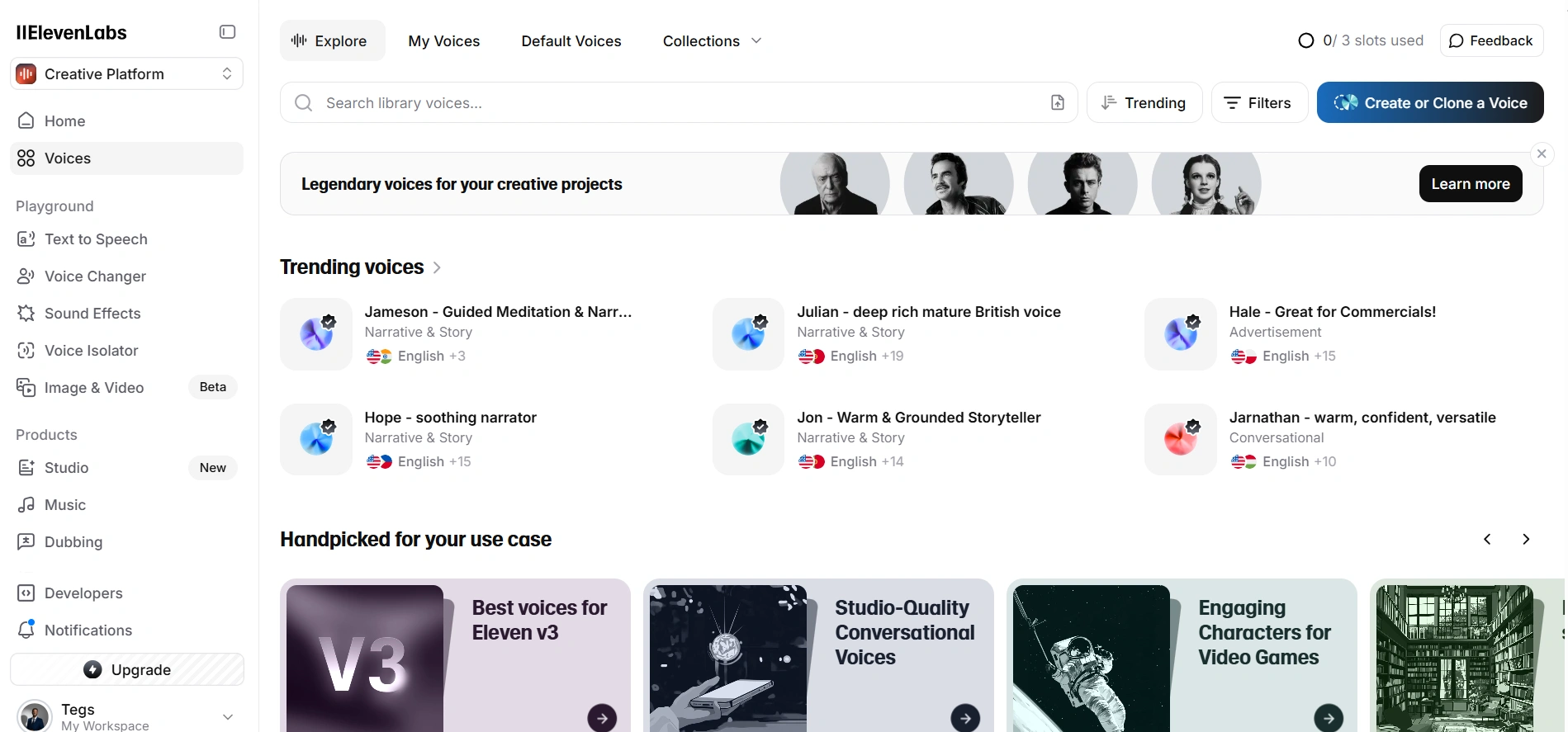
6. Use an AI Avatar So You Don’t Have to Be On Camera (HeyGen)
We were very anti-AI-avatar at first.
“This is our art. People want us, not some synthetic puppet,” we thought.
Then we joined a Zoom with seven AI experts we’d curated from social media.
Someone asked one of them about his content.
He said:
“Funny you say that…
Every video you’ve seen from me? That’s my AI avatar.”
Silence.
We had to rewrite our beliefs in real time.
Here’s the reality:
- Today, some AI avatars still look a bit uncanny
- But they’re getting better fast
- Most people care more about the value of the content than whether you personally hit “record”
If you don’t like being on camera, you’re out of excuses.
How to use HeyGen (+ ElevenLabs) in your business
- Write a script with ChatGPT
- “Write a 60-second script explaining [X concept] as if we’re talking directly to [our ideal client].”
- Create or pick your avatar in HeyGen
- Use your likeness or a professional avatar
- Pick your language, tone, and style
- Plug in your ElevenLabs voice
- So the avatar speaks in your voice
- And sounds like you’re actually there
- Export and publish
- Use it for:
- FAQ videos
- Ads
- Onboarding explainers
- Internal training
- Use it for:

Key takeaway:
You don’t have to personally shoot every video to have a powerful presence online anymore.
7. Use ChatGPT Voice Mode as a Strategy Partner
We’re obsessed with hands-free ideation.
ChatGPT voice mode lets you:
- Talk while you walk, run, or commute
- Think out loud
- Get pushed, challenged, and redirected in real time
One of us recently used this during a 45-minute run to solve a brutal strategic decision.
We told ChatGPT (voice):
“Look, we need you to challenge us. Don’t be nice.
Act like a mentor. Your job is to poke holes, ask hard questions, and make sure our plan is bulletproof.”
It did.
By the end, it basically said:
“You already know what you need to do. You’re just afraid to do it. Here’s the math that proves it.”
Use it with the Theory of Constraints (TOC)
If you want serious leverage, give it a framework like Theory of Constraints (TOC).
Here’s a simple pattern:
- Set the role
- “Act as a ruthless operator using Theory of Constraints to find the bottleneck in our business.”
- Give context
- Share your marketing, sales, and delivery numbers:
- Leads per month
- Lead → call booked
- Call → close
- Churn rate
- Capacity limits
- Share your marketing, sales, and delivery numbers:
- Let it interrogate you
- It should ask:
- “Where do people drop off most?”
- “What’s the slowest part of your delivery?”
- “Where do you feel constant friction?”
- It should ask:
- Ask for specific solutions with constraints
- “Give us 5 ways to fix this bottleneck using:
- Our current team
- <X> hours per week
- No new hires this quarter.”
- “Give us 5 ways to fix this bottleneck using:
- Ask it to rank the options
- Based on:
- Time to implement
- Expected impact
- Complexity
- Based on:
Key takeaway:
You’re not confused. You’re avoiding the obvious move. AI can help strip away the excuses.

Now that AI is matching your honesty and decisions, let’s talk about data.
8. Make Data-Driven Decisions Without Drowning in Dashboards (Precision)
Most teams either:
- Don’t look at data
- Or look at too much data and do nothing with it
Precision fixes this by:
- Connecting your:
- CRM
- Billing
- Ads platforms
- Other tools
- Creating a CEO scorecard for your business
- Sending daily KPI summaries
- Flagging anomalies with alerts (e.g., in Slack)
In our companies, every morning at 8 a.m.:
- Leaders get a scorecard
- They see:
- Core KPIs
- What’s good / bad vs benchmarks
- One recommended move to improve
That last bit is key.
You don’t just see numbers. You see:
“Here’s the number that matters today. Here’s what you should do about it.”
Example workflow:
- Connect tools (Stripe, HubSpot, Meta Ads, etc.)
- Let Precision build your baseline dashboard
- Turn on anomaly alerts to Slack
- Use the one-page dashboard in leadership meetings instead of 7 different tools
Key takeaway:
Most businesses don’t grow because no one knows which number matters most this week. Fix that.
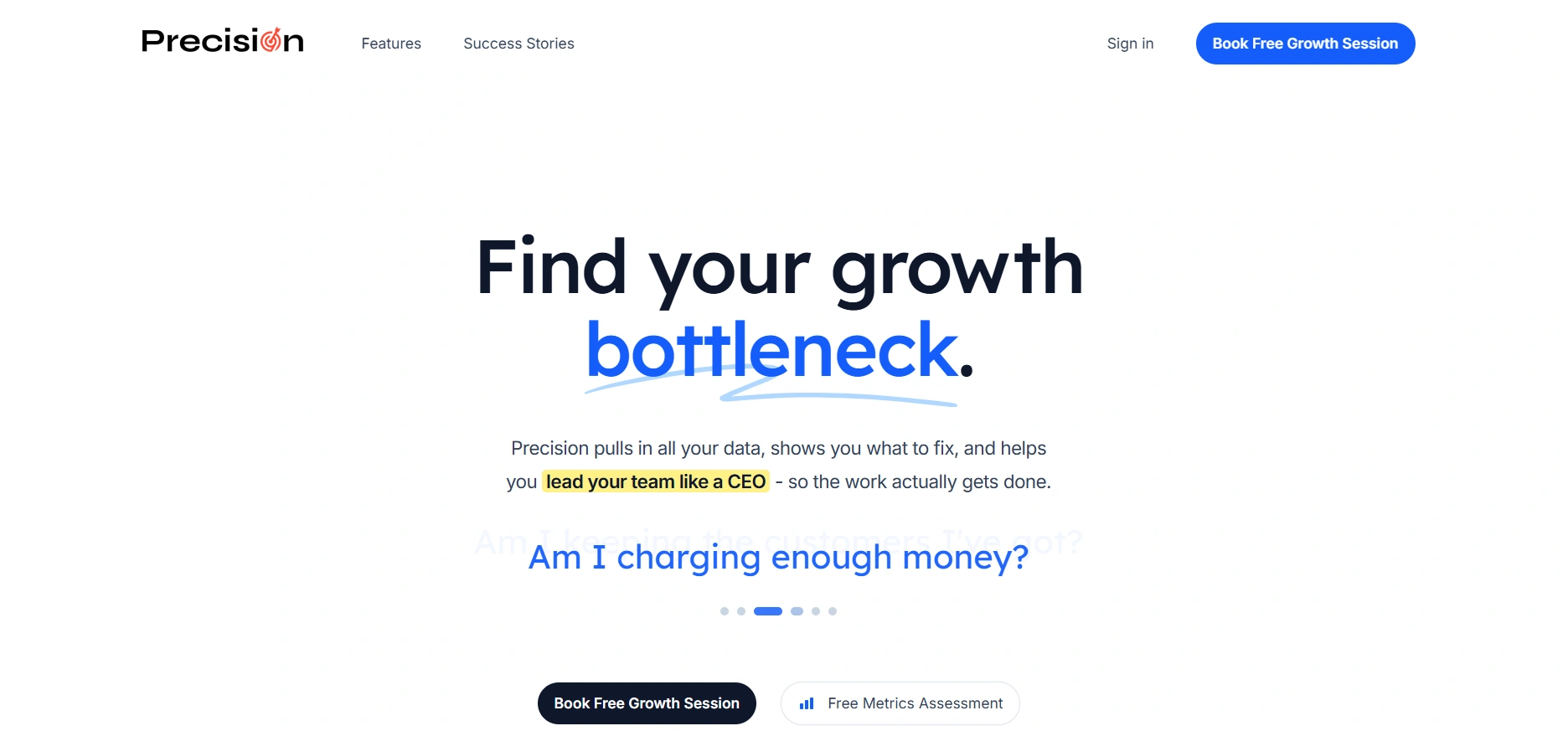
9. Multiply Yourself With an AI Chief of Staff (Fyxer/Fixer)
As the people behind Buy Back Your Time, we’ve been obsessed with leverage for years.
We always knew the “entry-level assistant” role would eventually be heavily automated.
Enter Fyxer/Fixer: an AI operations assistant that handles:
- Your inbox
- Calendar
- Travel
- Vendor wrangling
- SOP execution
- Follow-ups
No, it doesn’t replace humans entirely.
But it gives your human assistant superpowers, and if you don’t have one at all, it’s a great bridge.
How to deploy it in your world
- Import your playbooks
- All your SOPs, manuals, checklists
- “How we handle refunds”
- “How we book travel”
- “How we onboard a new contractor”
- Assign inbox ownership
- Give it access (within your comfort level)
- Let it:
- Draft replies
- Move things forward according to your playbooks
- Escalate what it doesn’t understand
- Review the weekly digest
- What it handled
- What it escalated
- Where you need to update playbooks
Bonus:
We use a 42-page internal EA playbook that covers:
- North star principles
- Email templates
- Escalation rules
- Calendar rules
In our own world, that’s the secret sauce that makes this kind of AI assistant truly powerful.
Key takeaway:
If you’ve been avoiding hiring an EA because you “don’t know what you’d give them,” this tool + a clear playbook solves that.
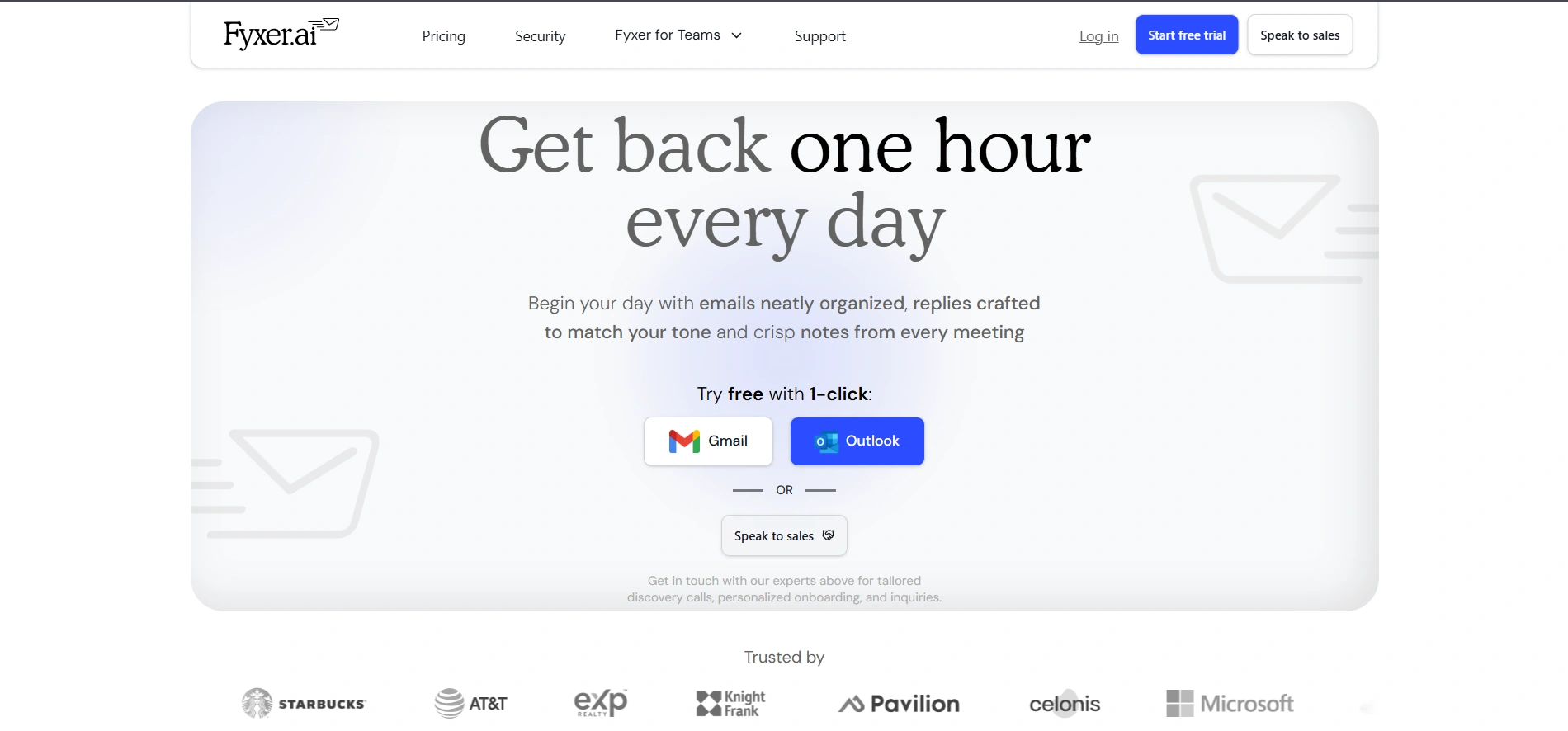
10. Turn Walls of Text into Decks and Web Pages (Gamma)
Humans think in pictures.
But we keep trying to get teams aligned using 17-page Google docs with zero visuals.
We used to put:
- Strategies
- Priorities
- Roadmaps
…all in text documents. And in meetings, everyone would be half-present, half-scrolling.
Then we ran the same content through Gamma.
Suddenly we had:
- Slide decks
- Visuals
- Callouts
- Simple layouts
And people started leaning in.
How to use Gamma in practice
- Paste your ugly doc (strategy, project plan, SOP) into Gamma
- Ask it to generate:
- A deck
- A one-pager
- Or a simple web page
- Let it auto-generate:
- Layouts
- Icons
- Charts
- Callouts
Then you:
- Tweak the copy
- Adjust a slide or two
- Export as:
- Web link

Key takeaway:
Your ideas don’t just need to be correct; they need to be seen and felt. Visuals help your team actually care.
11. Build a “Company Brain” Your Team and Clients Can Talk To (BuddyPro)
Right now, your company “lives” mostly in your head:
- Your beliefs
- Your frameworks
- Your past emails
- Your internal trainings
- Your client calls
When someone asks, “Hey, what do we do when a client says X?”
They ping you. Again.
BuddyPro turns all that into a company brain people can chat with.
What it can store:
- Emails you’ve written
- Social posts
- Trainings, workshops, and webinars
- Frameworks and beliefs
- Client notes and history
Then:
- Team members ask it for guidance
- Clients can get answers in your style, aligned with your philosophy
- It uses context from the person asking
Imagine:
- Each client’s context is loaded:
- What they bought
- Past call notes
- Their results so far
Now when they ask,
“Should we focus on offer A or B this quarter?”
The AI knows:
- Their size
- Their niche
- Their previous struggles
- Your recommended frameworks
…and responds like you personally would.
Future we’re excited about:
Licensing “brains” of:
- Netflix culture
- Apple product thinking
- Coca-Cola brand building
We’re not there yet at scale, but the direction is clear.
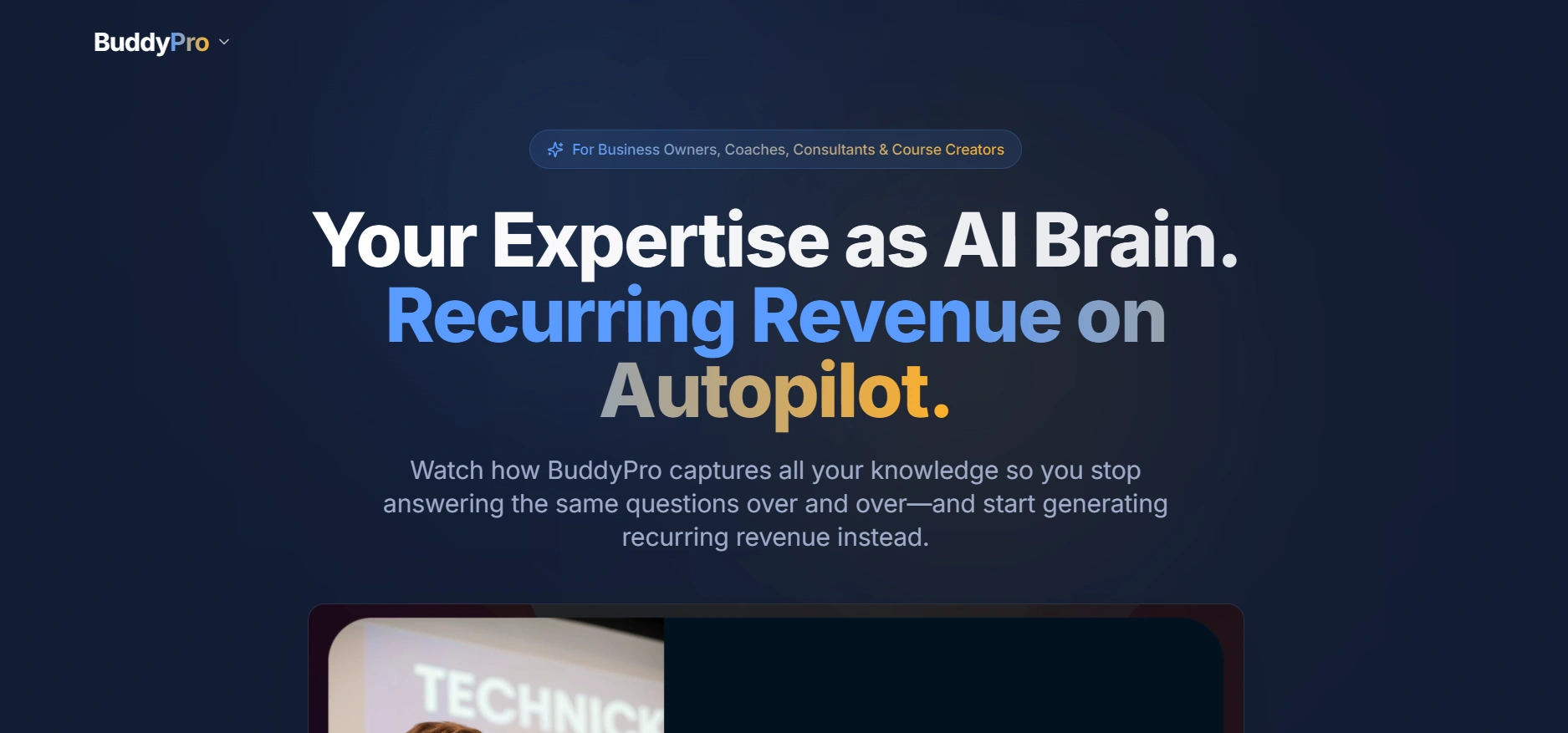
Key takeaway:
Scaling your business means scaling your judgment. BuddyPro is how you start doing that.
12. Use Voice AI as the Default Interface (Vapi)
Voice is becoming the preferred interface.
If we can call and talk, we don’t want to:
- Fill out forms
- Wait on email
- Sit in support chat queues
Vapi (Voice API) lets you build voice-based experiences for:
- Support
- Sales
- Research
- Anything that used to require humans on the phone
There’s a viral example of a 20-year-old who:
- Used Vapi
- Gave it a New-York-Italian-style voice
- Had it call a bunch of used Rolex dealers
- Negotiate for a specific panda watch
- Log all prices in a spreadsheet
- Sorts by best deal
That’s cute.
We’re interested in what it does to real business.
Example: Support triage with AI first, human second
Imagine you run a support team with several agents.
Here’s how you’d use Vapi:
- AI answers the call first:
- Identifies the customer
- Asks what’s wrong
- Tries to resolve using your knowledge base
- If it can’t solve it:
- Routes the call to a human
- Passes context (what the customer said, what has been tried)
- After each “escalation”:
- You update the AI’s knowledge/prompt
- Over time, fewer calls need human help
Over time:
- Fewer agents handling the same volume
- Or the same agents focusing on higher-value issues
- Customers get help faster
Key takeaway:
Don’t just use voice AI to plug holes. Use it to design new experiences that weren’t possible before.
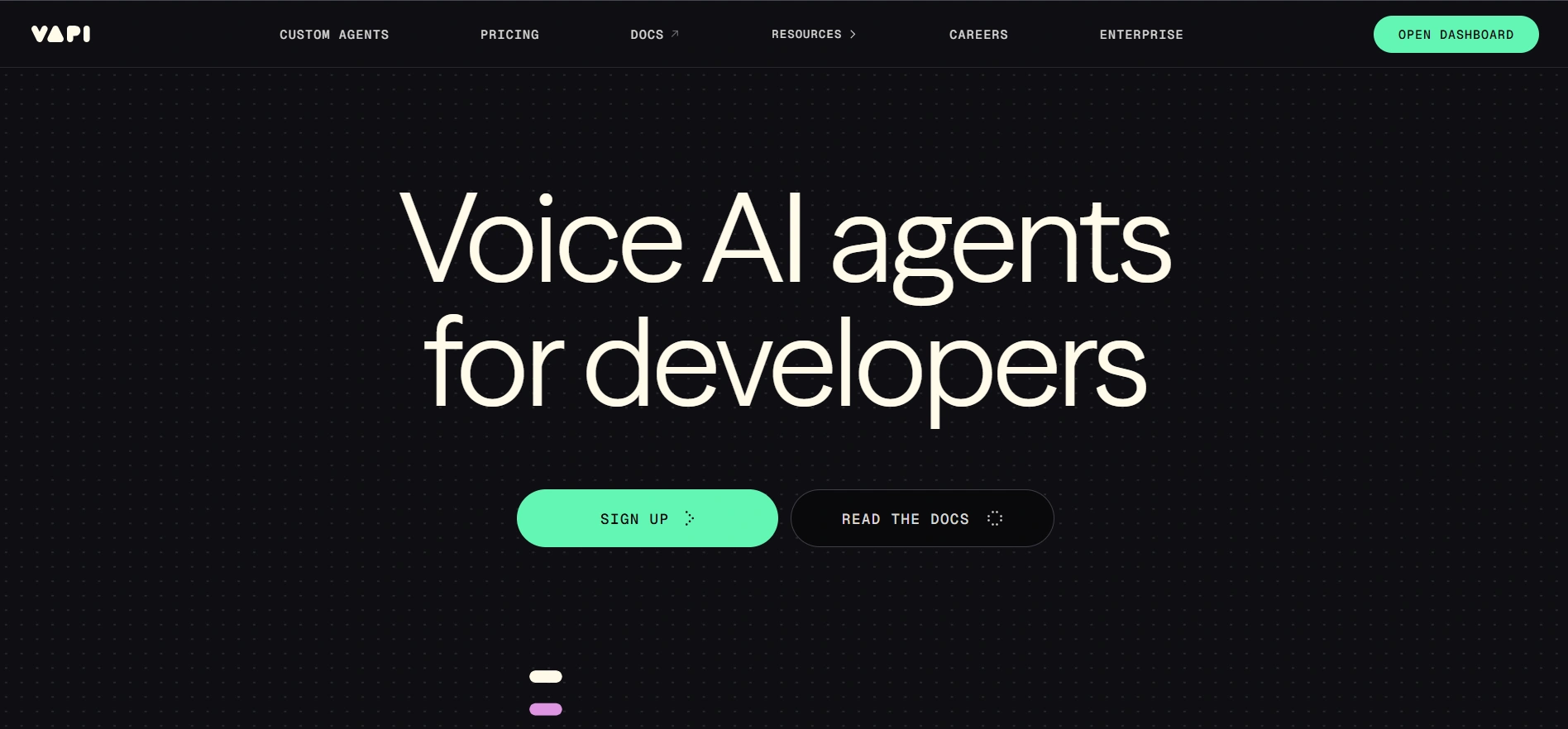
How to Implement This Without Overwhelm
Let’s be real: this is a lot.
So we’ll keep the implementation plan stupid simple:
- Pick ONE tool from this list.
The one that obviously solves your biggest current pain. - Block 90 minutes in your calendar this week.
Literally: “AI Implementation – Do Not Move.” - Ship a minimum viable version.
- One automated onboarding flow step
- One AI avatar video
- One voice clone use case
- One dashboard going live
- Do this once a week.
In a quarter, you’ll have 10–12 AI systems running quietly in the background.
Most people drown in “keeping up with AI.”
We’d rather you focus on stacking wins.
The Real Risk: Not Becoming an AI-Powered Company
Here’s the part nobody wants to hear:
In 3–4 years, in most markets, there won’t be “a bunch” of winners.
There’ll be one AI-powered winner and a long tail of everyone else.
Your goal is to become:
“An AI-powered company.”
Not: “We’re a coaching business that uses a few tools.”
But: “AI is woven into how we sell, fulfill, support, and think.”
Make this part of your culture:
- Use AI daily
- Encourage your team to experiment
- Share wins in Slack or team meetings
- Keep revisiting workflows every ~60 days (things really are changing that fast)
— Cohorte Intelligence
November 21, 2025.
